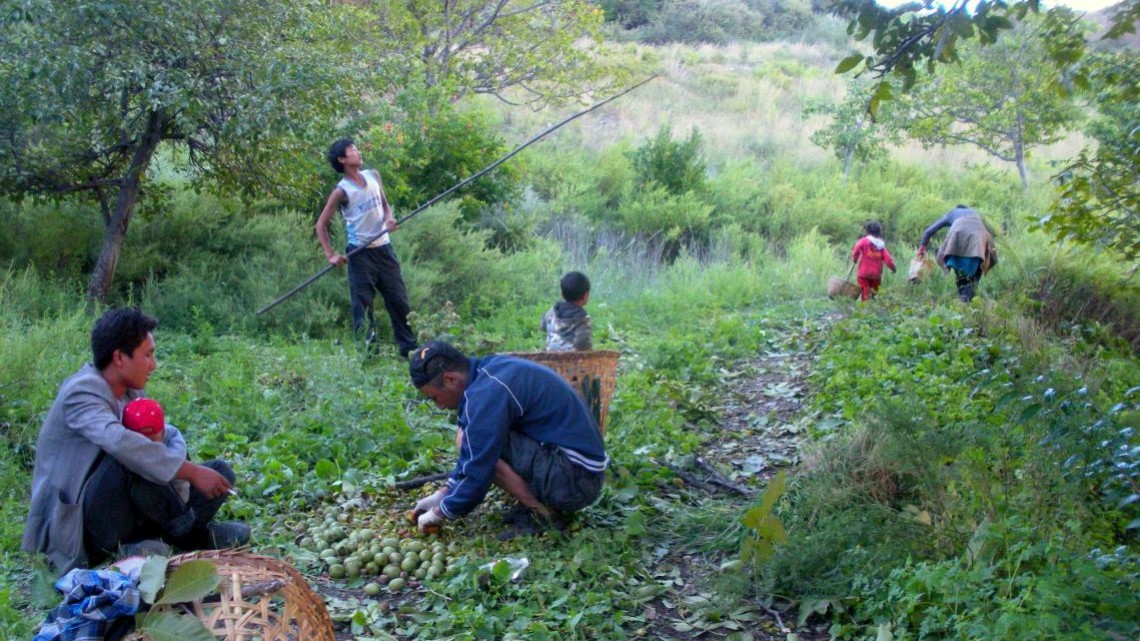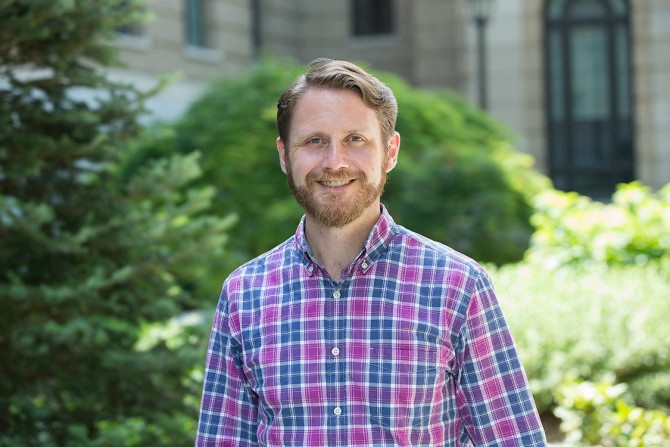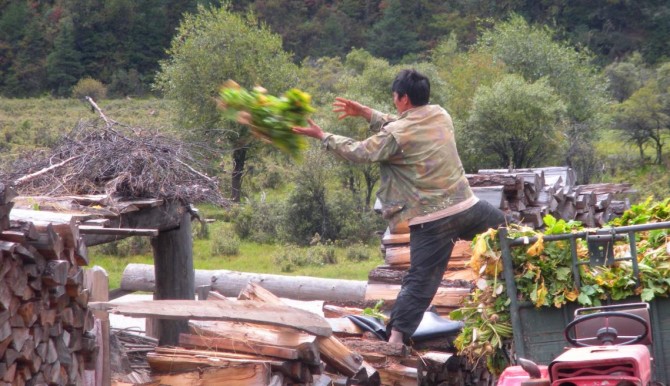
In recent years, government programs in China have resulted in walnuts being grown on thousands of acres of land, transforming the landscape.
News directly from Cornell's colleges and centers
How human behavior is reshaping the world
By Kelly Merchan
Human decisions both large and small influence environmental outcomes in profound ways. From forest regeneration in China’s Himalayan heights to flood responses in New York’s Hudson Valley, human behavior reshapes the world. But how do culture, social organization, and politics influence these changes and their impacts?
As an environmental sociologist and professor of global development in the College of Agriculture and Life Sciences, Jack Zinda analyzes global challenges surrounding relationships between human groups and environments. Zinda makes in-depth explorations of locales across the globe, from rural communities in China to metropolitan areas straddling the Hudson River in New York State. His work dives deep to assess two central research questions: How do people's actions and views in relation to the environment differ across individual households, communities and regions? How do these differences create varying social and environmental outcomes?
This research homes in on a key aspect of sociology: while individual choices may seem independent, they always draw from surrounding social and material contexts. Zinda works closely with community members to understand why they respond to environmental and socioeconomic changes in certain ways. He follows these responses to understand their impacts on landscapes.
“Environments are always social — we meet them with cultural frames that tell us what a forest or a river is and how it might best be used or spared from use, and the political and economic pressures that we take into account,” Zinda explains. “To get it right, whether restoring forests or keeping people safe from flooding, you need to listen to the people on the front lines and understand how their actions interplay with bigger social and biophysical systems.”
Reforestation in China
Southwest China, a vast region bordered by the Himalayas to the west and home to nearly 200 million people, has been at the center of one of the world’s largest reforestation efforts. Not surprisingly, the reforestation’s impact on social and economic development is complicated. Within these environmental programs, the Chinese government seeks to rehabilitate rural landscapes, implementing policies such as paying farmers to plant trees or founding national parks. Meanwhile, authorities also boost economic development by promoting tourism, encouraging the planting of cash crops such as walnuts, or subsidizing alternative sources of energy.
Understanding how people adapt to China’s environmental conservation programs is essential. “The people these interventions target don’t respond to interventions in isolation. When asked to retire farmland and plant trees, people take into account all sorts of things — their options for farming, what’s going on in their community or whether someone in the household might take a job in the city,” Zinda explains. He examines how these processes play out across scales — individuals, households, communities, and regions — to analyze patterns in decision making and their impacts.
Flood risk and climate migration in New York State
The city of Troy, NY is situated on the banks of the Hudson River near the origin of the Erie Canal. There, approximately 160 miles north of New York City, residents live along rising water levels as more intense and frequent storms spurred by climate change inundate communities along the river. In collaboration with the Hudson River Estuary Program and Global Development colleagues Robin Blakely-Armitage, David Kay and Lindy Williams, Zinda is working to understand how individuals and governments perceive and respond to flood risk. The research team is addressing the role of flood insurance policies and government regulations, as well as inequalities in vulnerability to flooding and access to resources to prepare for floods.
“Our goal is to provide useful information to inform households and local governments about flood risk and tangible actions that they can take, such as implementing preparedness measures or acquiring flood insurance policies,” Zinda says.
While flooding is a persistent risk to the region, the deadly Covid-19 crisis presented an immediate and unexpected risk in 2020 just as the researchers began their work. The emergence of the new risk raised important questions: How do people’s perceptions change in the risk of flood compared to risks rising from the coronavirus pandemic? What drives those perceptions and responses? The team adapted their approach to incorporate the pandemic’s risk impact into their research.
Bringing real world issues into the classroom
As environmental crises loom larger than ever, Zinda encourages his students to face real world challenges holistically. In his Environmental Sociology course, students produce public-facing articles about issues that interest them, analyzing reasons that produced the issue and also offering potential solutions (check out the 2018, 2019 and 2020 submissions). “In my classes I want my students to know that meaningful solutions deal with the full complexity of a problem,” Zinda says. “Oftentimes the fetishization of finding a solution quick gets in the way of us actually approaching environmental concerns in ways that address what’s fundamentally driving them.”
This article also appeared in the CALS Newsroom.
Kelly Merchan is a communications specialist in the Department of Global Development.
Media Contact
Get Cornell news delivered right to your inbox.
Subscribe


